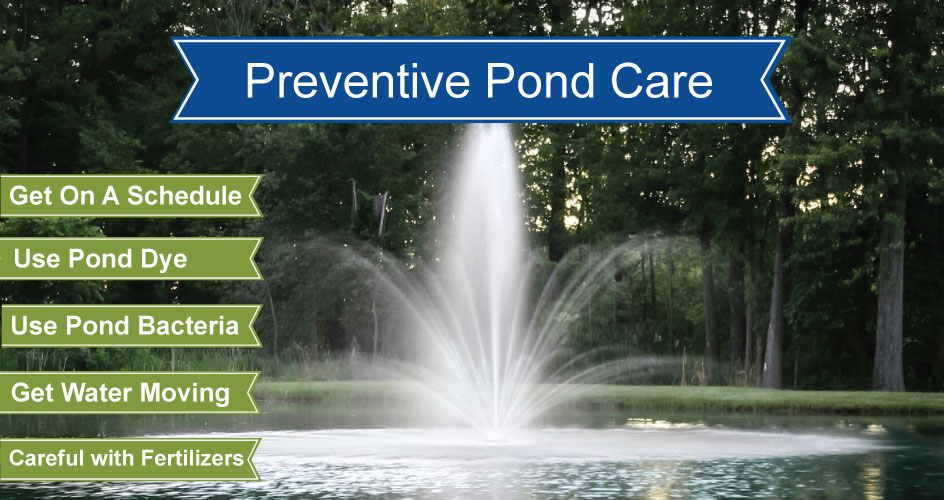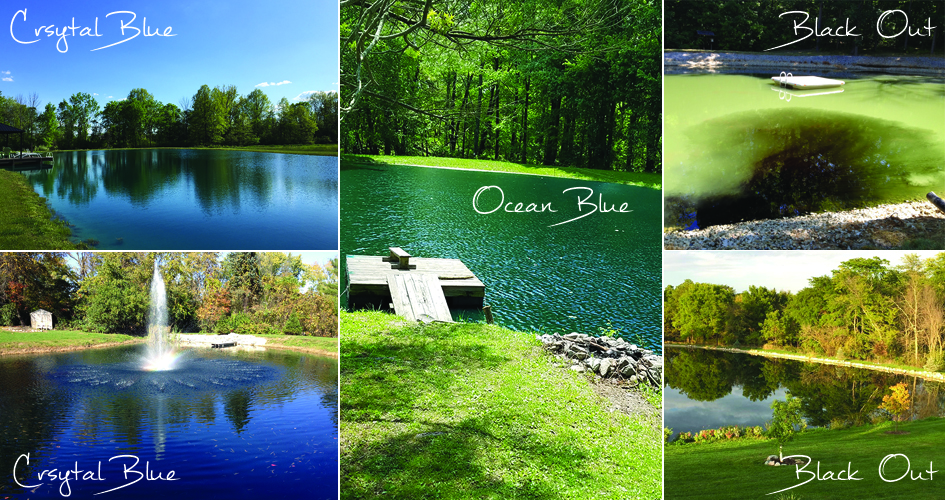Preventive pond care is your first line of defense in keeping your pond healthy. To prevent is to make something unable to do something. In this case, the goal of preventive pond care is to create an environment unconducive for weeds and algae to grow. There are several ways to implement preventive pond care to help slow down pond growth.

Getting on a schedule is important. As summer approaches calendars fill up and before you know it, it has been 2 months since your last treatment of pond dye and pond bacteria. Pond dye and pond bacteria should be applied monthly depending on rainfall. These products are easy to apply and can be applied at the same time. Simply pour 1 gallon of each into a pond that is 1 acre with an average depth of 4-6 feet deep. If you aren’t sure the size of your pond refer to Part 1 of this blog series, the link is below.
Using pond dye is an essential part to preventive pond care. When you choose not to use a pond dye, you will be fighting an uphill battle to control weed and algae growth. We have 3 different colors to choose from: Crystal Blue, Ocean Blue, and Black Out. Pond dye’s often help settle out floating particles and give an overall crisp look to the pond.

Pond Bacteria also plays a very significant part in preventive pond care. Pond Bacteria not only helps neutralize fertilizer run off, but it will also help keep muck from accumulating on the pond floor. Muck on a pond floor is the most fertile material. Left untreated, this rich material becomes a feast for weeds and algae in years to follow. Sanco has a maintenance dose of liquid bacteria, Natural Pond Cleaner, that can be poured in with the pond dye. However, we also have a more concentrated form of bacteria, Muck Doctor, that can be used to clean up targeted areas like beaches and docks.
Pond products aren’t the only way to combat weeds and algae. Pond aerators and fountains will get the surface of your water moving. Some weeds must have very still or stagnant water to grow. By creating surface movement, you are not only adding beneficial oxygen to the pond, but you are preventing certain varieties of weeds from growing.
The final preventive pond care tip we have for you is to be careful when applying lawn fertilizers. Lawn fertilizers are used to make lawns green; therefore, they are going to do the same thing when they run-off into your pond. We advise all pond owners to keep a 20ft perimeter around the pond that you do not fertilize. Keeping grass a couple of inches longer around the pond will help filter run-off.
We want to remind pond owners that preventive pond care is not done to stop growth altogether. The purpose of preventive pond care is to make growth more manageable when it starts. This leads into Part 4 of our DIY Pond Care Blog Series: Curative Pond Care. Check back next Monday to see how to treat your pond growth once it starts.
Part 2: Pond Care…I Like a Natural Pond
Part 3: Preventive Pond Care (Current Post)

